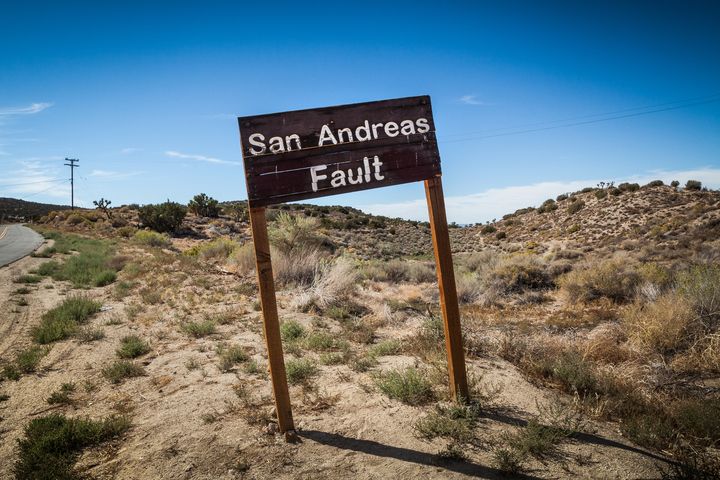
Scientists have discovered that Southern California was hit by 1.8 million more tiny earthquakes between 2008 and 2017 than had previously been recorded. Many of these were as small as 0.3 magnitude and imperceptible on the surface—however their discovery provides a comprehensive view of earthquake activity in the region, which could help scientists better understand what is going on beneath the surface of this geologically volatile region.
Experts have long known there are far more earthquakes taking place than records show. The problem in finding them is that the equipment is not sensitive enough to find very small events and to distinguish them from "background noise."
To rectify this, Caltech's Zachary Ross and colleagues used a template matching algorithm that allowed them to identify tiny, previously unrecognized earthquakes. Template matching involves taking records of earthquakes and seeking out look-alike events. The algorithm identified over 1.8 million earthquakes over the decade up to 2017—a tenfold increase on what was previously listed in the earthquake catalog. Boiled down, this suggests Southern California experiences 495 earthquakes every day—or about one every three minutes. Findings are published in the journal Science.
Ross told Newsweek the findings are in line with what they expected. "The difference between this study and others is entirely in the scale," he said. "Other studies only looked at generally a few weeks worth of data because of the heavy computational demands. Our dataset was so massive that we had to perform the calculations on a supercomputer and write specialized software to scale up to these demands. Coordinating the logistics of this entire operation was a major challenge and a big team effort."
Findings showed that a large proportion of the 'new' earthquakes took place at the San Jacinto fault zone—one of the three major faults in the region. "This research better informs us about the geometry and locations of some faults deep beneath the surface," Ross said. "It shows that the extent to which earthquakes can communicate with, and trigger other earthquakes, is broader than we previously observed. It also provides important new observations on the nucleation of earthquake sequences—how these sequences initiate."
California is currently experiencing an "earthquake drought"—in that there has not been a big earthquake for a while. Earthquakes normally take place along the edges of tectonic plates. Within these plates you have fault zones, where movement of the plates cause rock to push together and pull apart, leading to the build up of pressure. Eventually, the pressure becomes so great that the plates move suddenly—resulting in an earthquake. Scientists estimate the longest fault in California—the San Andreas fault—will probably produce a strong earthquake by 2045.
"Of all of the earthquakes in our catalog, little to none of them appear to be occurring on the San Andreas fault," Ross said. "This is in contrast to many of the other major (and minor) faults in Southern California, which produce lots of microearthquakes. At the moment we do not have a good understanding of the physics behind these observations, and this is an important subject of future research."
He added that the findings help show the extent to which earthquakes can communicate with and trigger earthquakes, while also showing how these events start.
Peggy Hellweg, the Operations Manager of University of California Berkeley's Seismology Lab, who was not involved in the research, commented on the findings. She told Newsweek the findings are expected—and in fact there could well be even more earthquakes "missing" from the record. "This study doesn't really produce any new insights into improving our models of how faults work or into Southern California fault systems, although it does give us a better view into the seismicity on the faults. From the details of the new catalog, it might be possible to glean changes in earthquake activity in the time leading up to a quake. Maybe."
Uncommon Knowledge
Newsweek is committed to challenging conventional wisdom and finding connections in the search for common ground.
Newsweek is committed to challenging conventional wisdom and finding connections in the search for common ground.
About the writer
Hannah Osborne is Nesweek's Science Editor, based in London, UK. Hannah joined Newsweek in 2017 from IBTimes UK. She is ... Read more
To read how Newsweek uses AI as a newsroom tool, Click here.








